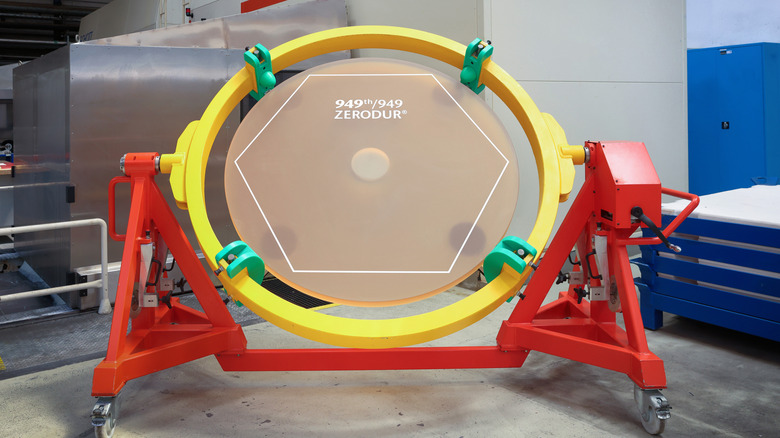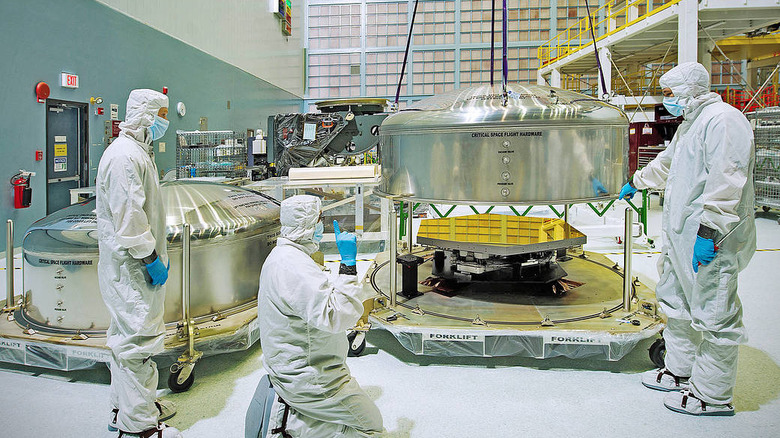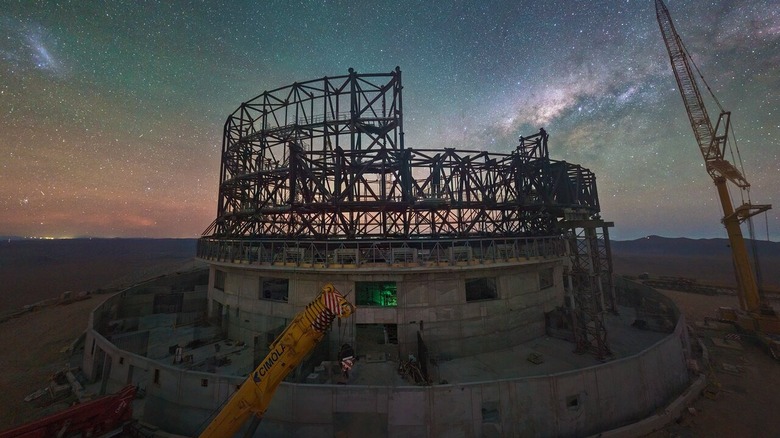This Enormous New Telescope Will Be Powered By The World's Largest Mirror
When it comes to telescopes and how powerful they are for looking deep into the cosmos, there are lots of factors to consider. Such as the portion of the electromagnetic spectrum the telescope operate in. For example, the Hubble Space Telescope, looks in the same wavelength as the human eye, but the James Webb Space Telescope operates in the infrared — useful for looking at different phenomena. Then, there's the width of the telescope's field of view and the type of instruments the telescope has, such as cameras or spectrometers.
But there's one broad principle that remains true when it comes to powerful telescopes: bigger is better. When you hear a telescope described as a "6.6-meter" telescope, like the James Webb Space Telescope, that means that the telescopes' primary mirror is 6.6 meters across. The bigger the primary mirror of a telescope is, the more light it can collect at one time. A larger mirror can collect more light at once, enabling it to see dimmer (and often more distant) objects. Webb can see very distant galaxies thanks to its huge primary mirror, which is the largest that has ever been launched into space.
Telescopes are often put into space because they can sit above the Earth's atmosphere, which makes them capable of more precise readings. However, there is a trade-off: not only is it difficult and expensive to launch something into space, but this also limits the size of the primary mirror.
Giant mirrors on the ground
Space telescopes have to be folded up to fit inside the nose cone of a rocket, so the James Webb Space Telescope used an origami-style folding mirror, then unfolded in space. But this process is difficult and risky, as telescope mirrors have to be perfectly aligned to take accurate readings. That's why astronomers don't only use space telescopes. They also build telescopes on the ground, where not only is it easier and cheaper to build and maintain a structure, but also components like mirrors can be much larger.
It was recently announced that construction on the largest telescope mirror ever built is complete. It is a whopping 39 meters across, and it will form a part of an enormous new telescope — called, appropriately enough, the Extremely Large Telescope (ELT). With blanks made by the German company SCHOTT, this vast structure was the biggest that the company had ever made. But the mirror didn't just need to be big. It also needed to be incredibly accurate, as even the tiniest flaw could create distortions in the images taken by the telescope.
All about the Extremely Large Telescope
The ELT has been in development since 2005, and is currently under construction in a site in Chile in the Atacama Desert. This region is famous for hosting several large telescopes, thanks to its clear skies, low level of rain, and very low light pollution due to being far away from densely populated areas. With its huge 39-meter mirror, it will look in both the visible light and infrared wavelengths, and will have a suite of instruments. These include spectrographs, cameras, and a special relay which adapt to the conditions of Earth's atmosphere to reduce their blurring effects.
It will be used for a range of science, from looking for Earth-like exoplanets and very distant galaxies to studying the mysterious forces of dark energy and dark matter, which have a huge effect on the overall expansion of the universe but remain largely unknown. To do this, the telescope's mirror needs to be virtually perfect, polished to a precision of 10 nanometers across the main surface used to collect light. That means that any flaws on the surface need to be less than one thousandth the width of a human hair, according to the European Southern Observatory, the organization in charge of the telescope.
The mirror weighs 230 tonnes and used 2,500 actuators in its manufacture to position it perfectly. The mirror is made up of 798 hexagonal segments, with each segment being 5 centimeters thick and 1.5 meters across. The segments were shipped to Chile separately, and in 2024 the final blank arrived, so the segments can be polished to a perfect mirror finish and carefully added to the structure. The ELT is aiming to be ready for first observations by 2028.


